SWR Television, 6.15 p.m.
Neustadt an der Weinstraße is known as the "Pearl of the Palatinate". World-famous wineries are located here. The Christmann family winery is one of the top addresses. Three generations are working on a natural and authentic wine. The Schäffer Winery has recently become the outdoor venue of the Theater in der Kurve - the only permanent theatre in Neustadt. Because of Corona, it became an outdoor stage. In the traditional restaurant "Quetschekuchestubb", the Sachse couple serves modern regional cuisine with fine wines.
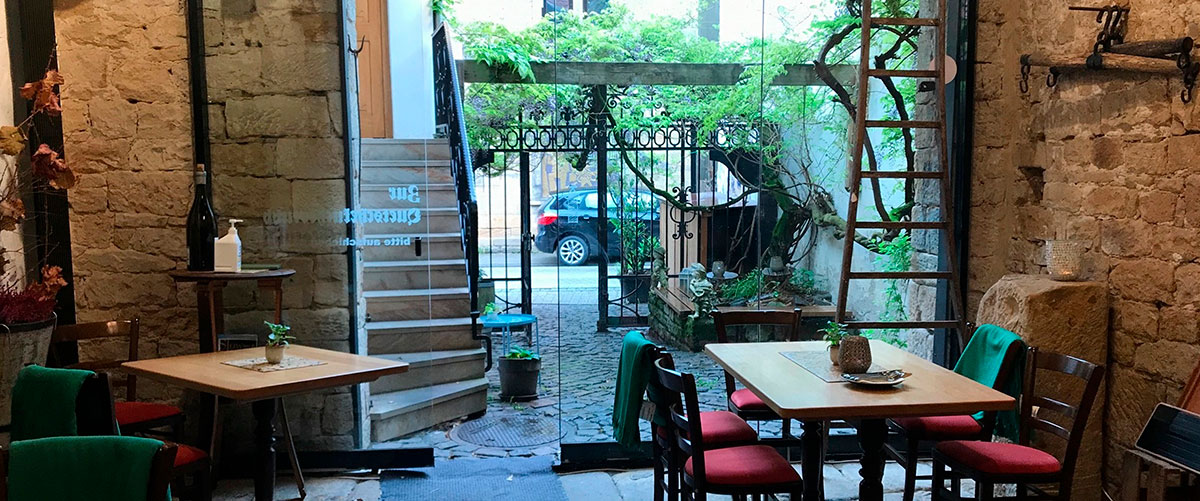 |
hr Television, 8.15 p.m.
Warm hospitality, good wine, good food, 2,000 hours of sunshine a year, a landscape straight out of a picture book: In March, the almond blossom heralds the arrival of spring in the Palatinate. Then a pink splendour adorns the German Wine Route and the hiking trails. Together with the vast Palatinate Forest, the region is particularly inviting for hiking, cycling and climbing at this time. We accompany former wine princess Christina Fischer on a journey through her homeland from the Palatinate Forest to Deidesheim - sometimes on, sometimes off the Wine Route - and discover with her a region that has far more to offer than "Worscht un' Woi".
hr television, 4.00 p.m.
The gourmet tour first takes you to the Rhine: to the largest Rhine island, the Mariannenaue. Wine has been grown here for hundreds of years - currently it is Chardonnay. Wild boars also appreciate the taste of the grapes, which is why many of them go into the sausage. During a romantic picnic on the island, winemaker Stefan Lergenmüller tastes sausage and wine with his friends. Afterwards, there is an exclusive tour of the huge cellars of Schloss Reinhartshausen. The tour continues to Rüdesheim. After the grape harvest, the Rheingau has quietened down. A good opportunity to walk in the colourful vineyards and have a fine meal afterwards.
hr television, 8.15 p.m.
Dreamland on the sunny side of the Alps, that's South Tyrol. With 350 peaks over 3,000 metres, eight national and nature parks, the largest alpine pasture area in Europe, the Alpe di Siusi, the UNESCO World Heritage Dolomites, crystal-clear mountain lakes, enchanted valleys and romantic villages and towns. Wine and apples grow here, edelweiss and alpine rose, and the marmots doze in the sun.
SWR Television, 10.45 a.m.
When Neustadt-Gimmeldingen in the Palatinate celebrates its almond blossom festival, spring begins with the first wine festival. Germany's oldest wine festival is celebrated in Winningen on the Moselle.
ZDFinfo, 10.45 a.m.
For many centuries, wine was an indispensable part of a refined table. At Eberbach Monastery in the Rheingau, Christian Rach learns what it meant to pick the grapes by hand and press them in wooden wine presses. At that time, people were happy to put up with the great effort. In the past, the consumption of wine and beer was much higher than today because of the often poor water quality.
hr television, 2.00 p.m.
Warm hospitality, good wine, good food, 2,000 hours of sunshine a year, a landscape straight out of a picture book: In March, the almond blossom heralds the arrival of spring in the Pfakz. Then a pink splendour adorns the German Wine Route and the hiking trails. Together with the vast Palatinate Forest, the region is particularly inviting for hiking, cycling and climbing at this time. We accompany former wine princess Christina Fischer on a journey through her homeland, from the Palatinate Forest to Deidesheim - sometimes on, sometimes off the Wine Route - and discover with her a region that has far more to offer than "Worscht un' Woi".
SWR Television, 8.15 p.m.
In southwest Germany there are many stately castle gardens, overgrown parklands, enchanted monastery gardens or open-air botanical gardens.
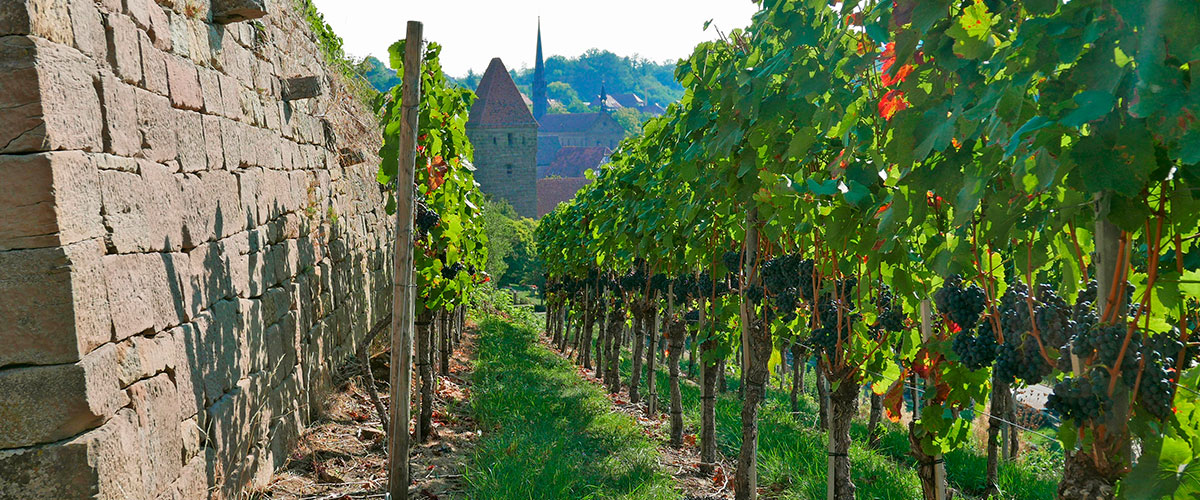 |
hr television, 9.15 a.m.
The gourmet tour first takes you to the Rhine: to the largest Rhine island, the Mariannenaue. Wine has been grown here for hundreds of years - the latest is Chardonnay. Wild boars also appreciate the taste of the grapes, which is why many of them go into the sausage. During a romantic picnic on the island, winemaker Stefan Lergenmüller tastes sausage and wine with his friends. Afterwards, there is an exclusive tour of the huge cellars of Schloss Reinhartshausen. The tour continues to Rüdesheim. The Rheingau has quietened down after the grape harvest. A good opportunity to walk in the colourful vineyards and have a good meal afterwards.
arte, 13.00
A lonely volcanic island in the Atlantic, Madeira was for a long time the last stop for sailors on their way to the so-called New World. In the 15th century, it was occupied by Portuguese colonisers, who began cultivating wine on the rugged cliffs soon after their arrival. Madeira's sweet fortified wine quickly became popular, as it could be stored well on long crossings and gained in flavour with warmth. It experienced its heyday when it sailed the world's oceans in the barrels of explorers.
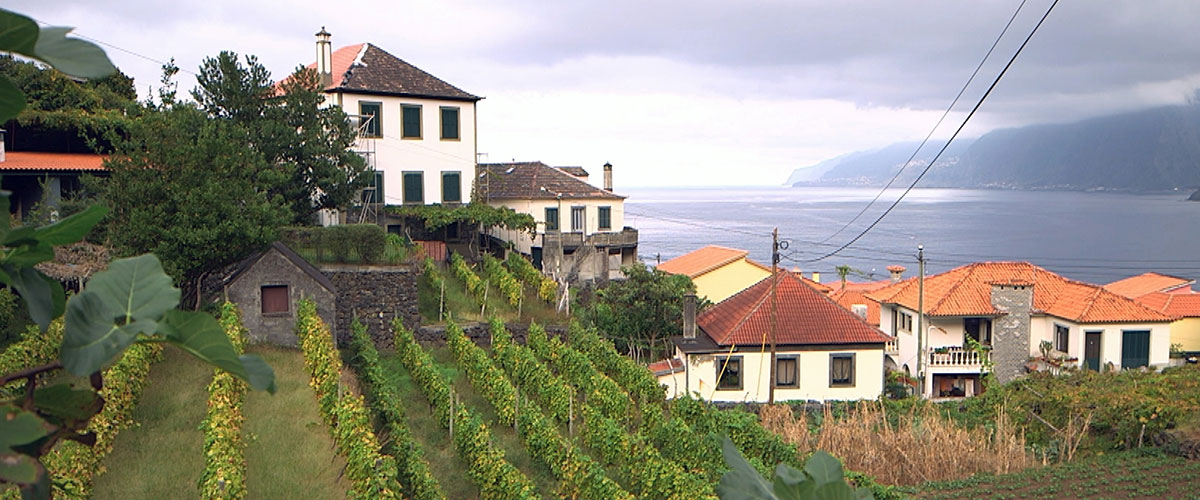 |
3sat, 3 .35 p.m.
In the second stage, the film crosses the French-speaking part of Switzerland. It begins south of Basel in the rugged Jura and leads across Lake Geneva along the Lavaux with its Mediterranean flair. The journey leads to Lake Geneva in the wine-growing region of Lavaux. It is famous for its Chasselas wine. New grape varieties are being developed there to adapt to climate change and changing tastes.
3sat, 5.40 p.m.
The Jura-Südfuss line is one of the most beautiful railway routes in Switzerland. Along the French and German language border, the journey continues along the western shore of picturesque Lac Léman to Geneva. From the Dreiseenland, the train heads south to idyllic Lavaux, Switzerland's best-known wine region.
ARD-alpha, 21.00
In France, one hears more and more often that Bordeaux is a serious competitor to Paris. Bordeaux produced the philosophers Michel de Montaigne and Montesquieu, its architecture is a prime example of classicism - and Bordeaux is the world capital of wine. In Bordeaux, a visit to the wine museum "Cité du Vin" is a must. Film author Christine Seemann explores the city the French way in a restored 2CV lady with a Charleston look. Its owner, Martine Marcheras, guides us through the city on the Garonne in a charming way. Christine Seemann turns her back on the coast and drives eastwards into the heart of the Bordelais to Saint Émilion. The gently rolling wine-growing region was the first to be put on UNESCO's World Heritage List. For Saint Émilion is a synthesis of the arts, nestling picturesquely in the landscape, full of enchanted corners and architectural treasures. And everything revolves around wine. In September, the Jurade, the wine fraternity, gives permission for the grape harvest - a reason to celebrate. It is an emotional spectacle that enchants not only wine lovers.
SWR Television, 3.00 p.m.
Juliane Eller from Alsheim is the shooting star among German female winemakers. At the age of 23, she took over her parents' vineyard and, despite the financial risks, radically restructured the business. Quality instead of mass. The winemaker's daughter relies on organic wine and manual harvesting. She has started her own wine line with the Juwel wines. Juliane is glad that her parents Thomas and Ingrid still help out. Grandma Katharina takes care of the physical well-being at the winery. Juliane Eller uses social media for her wine marketing; she belongs to the "Instagram generation". The young winemaker from Rheinhessen succeeded in getting presenter Joko Winterscheidt and his friend, actor Matthias Schweighöfer, interested in her work. The three successfully market their "3 Freunde wine". In the meantime, Juliane and father Thomas are looking for competent reinforcement: an employee for the outdoor area who shares the family's philosophy.
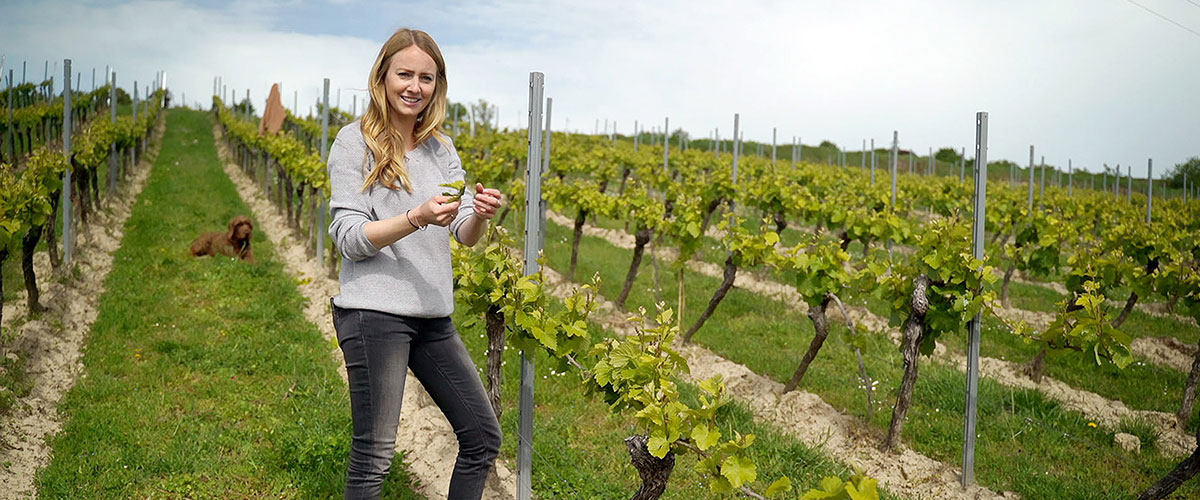 |
arte, 3.10 p.m.
Tuscany, with its picturesque landscape, world-famous towns and its people, is one of Europe's regions of longing. Far away from the tourist centres like Florence and Pisa and the wine-growing regions in Chianti, there are still unknown spots in the south of Tuscany where much is still authentic and wild. There, the people cultivate their stubbornness.
SWR Television, 9.00 p.m.
Television author Monika Birk discovers the friendly Baden way of life. Right outside the gates of the Black Forest metropolis lies the Kaiserstuhl region with idyllic winegrowing villages.
ORF III, 2.40 p.m.
White horses, blue vines - In the home of the Lipizzaner and the Schilcher In western Styria, the world-famous Lipizzaner horses are bred and a unique wine made from the blue Wildbacher grape is cultivated: the Schilcher. But here you can also discover the unknown. Extensive alpine pastures, untouched river landscapes, sunny vineyards and winegrowers' houses: that is Western Styria. The soot of coal mining is history. Today it is the white Lipizzaner horses and the blue Wildbacher vine that make the land colourful and full of life.
WDR Television, 10.55 a.m.
SWR Television, 11.00 a.m.
Since the sixth century BC, viticulture and people have been inseparably linked. Red wine and white wine, green vineyards, different grape varieties and enjoyment - that's what people think of when they think of wine. "Planet Wissen" also visits the only university in Germany where you can study viticulture and oenology. The presenters ask what wine and climate change have to do with each other and how vines can cope better with drought. They talk about fungus-resistant grape varieties and how to influence the alcohol content of wine without changing its character. The presenters talk about alcohol-reduced and alcohol-free wine. Also about the development of organic viticulture. Guests in the studio: Yvette Wohlfahrt, Institute for Viticulture at the Geisenheim University of Applied Sciences Romana Echensperger, Master of Wine
3sat, 1.10 p.m.
The Styrian nature parks aim to preserve the cultural landscapes that have been shaped over the centuries through sustainable use and to develop them further in keeping with the times. They have set themselves the task of preserving the diverse natural and cultural landscapes of Styria. And the diversity here is enormous: moor and pond landscapes formed by the ice age, vineyards, alpine pastures, orchard meadows and dense forests everywhere. "Protect by using" - this is the motto of the Styrian nature parks Almenland, Steirische Eisenwurzen, Mürzer Oberland, Pöllauer Tal, Sölktäler, Südsteirisches Weinland and Zirbitzkogel-Grebenzen.
ARD-alpha, 1.30 p.m.
Hardly any other product has accompanied mankind as long as wine. Since the 6th century BC, viticulture and man have been linked. Red wine and white wine, green vineyards, different grape varieties and enjoyment - that's what everyone thinks of when they think of wine. "Planet Wissen" visits the only university in Germany where you can study viticulture and oenology. They ask what wine and climate change have to do with each other and how vines can cope better with drought. They talk about fungus-resistant grape varieties and how to influence the alcohol content of wine without changing its character. They talk about alcohol-reduced and alcohol-free wine. And about the new trend towards ecological or organic viticulture, as more and more people are interested in natural wine.
3sat, 2.45 p.m.
Isabella Stirm from Burgenland has paprika in her blood and guides viewers through her Austrian homeland with a lot of charm. Sometimes she goes on safari through the Pannonian flat Seewinkel, sometimes she follows in the footsteps of winegrowers through the hilly and green southern Burgenland. Along the way she meets food pioneers and many other locals full of passion for Austria's sunniest region. Isabella Stirm visits cities such as Eisenstadt, the smallest provincial capital of Austria, or the free city of Rust on Lake Neusiedl, which is known for its good wines and cosy wine taverns. Other unforgettable experiences include a ride on a vintage tractor, a sightseeing flight on a Cessna and a canoe tour through the huge reed belt of Lake Neusiedl. It will be an adventure!
hr television, 2.30 p.m.
"A convent is a great talent shed. You discover things about yourself that you had no idea about before." This is what Sister Thekla says, who first learned the profession of winemaker in the convent of St. Hildegard in Rüdesheim (Rheingau) - because it was needed. The monastery includes extensive vineyards where grapes are harvested for the monastery's own white and red wine. Sister Thekla also walks through the vineyard with groups of visitors. Viticulture, like the monastery shop, the goldsmiths or the ceramics workshops, is a separate branch of the economy that finances monastic life in Rüdesheim. Each nun has her own profession.
WDR Television, 3.00 p.m.
Steep slopes and magnificent views: The Moselle is one of Germany's most breathtaking rivers. But working on its banks has never been easy. Nevertheless, young people in particular are once again choosing to live along the Moselle - in France, Luxembourg and Germany. Rebecca Materne and Janina Schmitt belong to a young generation of winemakers who have rediscovered the steep slopes of the terraced Moselle. Rebecca Materne comes from the Ruhr area, Janina Schmitt from Hesse. In 2012, the friends leased a vineyard in Winningen near Koblenz - and grow Riesling on slopes with an inclination of more than 50 degrees. Without the use of machines, without pesticides. The couple's life is characterised by the unpredictability of the weather and hard work: tying the vines in spring, bottling in ssummer grape harvest in autumn. It would not be possible without the help of family and friends. If both want to make a living from winegrowing one day, their business has to grow. But Materne & Schmitt are optimistic. In Traben-Trarbach, the "Stadtschröter" drag a tree trunk through the town to set it up as a guild tree on the banks of the Moselle. Schröter were once indispensable for the wine trade. They heaved the filled barrels out of the cellars to load them onto ships. The advent of the wine pump caused the craft to die out.
hr television, 3.15 p.m.
Recreation for body, mind and soul between the Rhine and Fulda There are monasteries of many orders in Hesse that offer their guests rather contemplative days. Others, such as the Abbey of St. Hildegard in Eibingen, allow guests to help with the grape harvest.
ARD-alpha, 6.45 p.m.
In the middle of the Wachau lies the Fischer vineyard. This is the home of the "Huchen-Peppi". Josef Fischer takes care of the survival of the huchen, which have become rare. For his own sake, because he likes to eat the imposing "Danube salmon". The retired winegrower is a contented man. This is also due to his pension, a handsome additional pension of 365 bottles of wine per year, which he receives from his son - but also due to the place where he lives: "The Danube is a wonderful, mighty river. I am happy every day that I am at home here."
hr television, 8.15 p.m.
"Flower Island" is also called Madeira, or "Island of Eternal Spring". Both refer to the fact that the island around 600 kilometres off the west coast of Africa has a special climate: Not too hot in summer, not too cold in winter. This not only pleases the vines, but is also a good prerequisite for an active holiday on the island, which belongs to Portugal.
ZDFinfo, 2.45 a.m.
(in the night from Saturday to Sunday)
Germans love wine. Especially when it is cheap. Almost half of all wine is now sold in discounters. Wine production and sales are a global business. With downsides for the environment and workers. The most popular imported wine from overseas is wine from South Africa. Good and cheap - that is the image. But the price pressure is causing untenable conditions on South African wineries. Wine from Bordeaux is also appreciated in Germany. Germany imports about 15 million litres a year. Many French winegrowers, however, only achieve the quality they are used to with pesticides that can still be detected in the wine. In Germany, too, the image cultivated by winegrowers of a noble, pure drop is only part of the reality. For in addition to pesticides in the vineyard, more than 50 additives may also be used in the wine cellar after the harvest. By no means all of them are harmless. The documentary by Anna Fein, Erik Hane and Stefan Hanf explores the consequences of the globalisation of the wine market for people and nature. The authors are on the trail of the darker side of wine: they research the working conditions at South African wineries. They talk to scientists about the use of synthetic chemical pesticides and fining agents in viticulture. They visit an organic winegrower in the Bordeaux region who tries to produce high-quality wines in the most natural way possible.
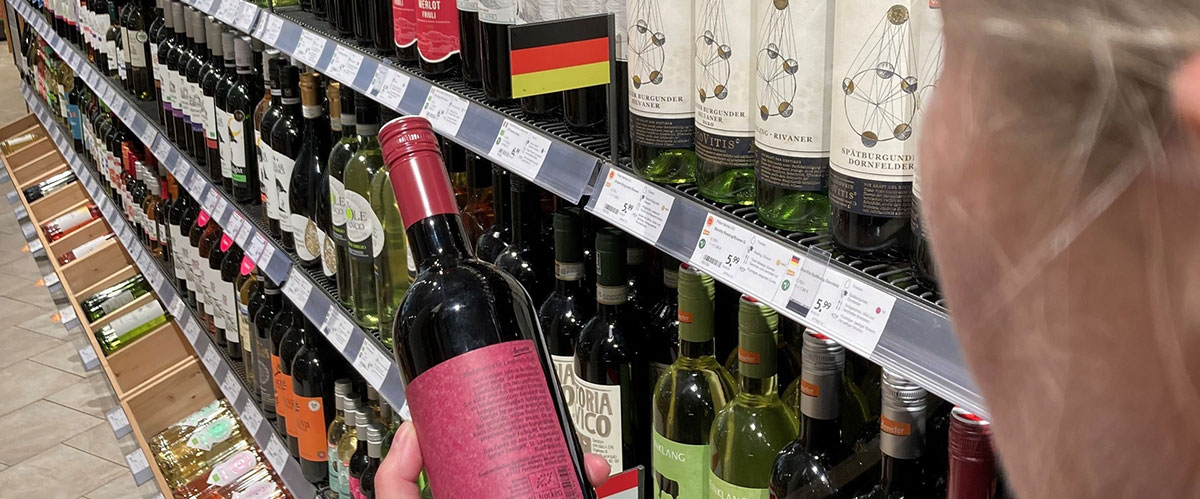 |
WDR Television, 2.15 p.m.
In the Middle Rhine Valley, the Rhine flows past castles at kilometre intervals - and vines that the Romans brought to the north some 2,000 years ago.
SWR Television, 1.45 p.m.
Bordeaux produced the philosophers Michel de Montaigne and Baron de Montesquieu, the city's architecture stands for classicism. Bordeaux is the world capital of wine. A visit to the Cité du Vin wine museum is a must. Author Christine Seemann explores the city in a restored 2CV duck with a Charleston look. Its owner Martine Marcheras charmingly guides us through the city on the Garonne. Only an hour's drive away to the southwest is the Cap Ferret peninsula with its colourful settlements of oyster farmers. Only here is paté served with it. Cap Ferret has something magical about it. We continue eastwards into the heart of the Bordelais to Saint Émilion. The hilly wine-growing region was the first to be put on the World Heritage List by Unesco. Saint Émilion is a synthesis of the arts, blending picturesquely into the landscape, full of enchanted corners and architectural treasures.
ARD-alpha, 10.45 p.m.
There are already experiments with drones in viticulture, too. The temptations are great: robots could one day work tirelessly in the fields. The small machines could sow, weed and destroy weeds under digital control. The robots would be so small that soil compaction would no longer play a role. The energy and environmental balance would also be significantly better than that of large machines. Can the robots in the future do what large tractors are normally needed for? Robots could also plant grain in lines in one part of a field and sow maize with pinpoint accuracy in the other. In future, farmers could use them to respond more to the nature of the soil or terrain. And they could manage the fields on a much smaller scale and more according to ecological aspects. "The opportunity for robots lies primarily in very precise and light tasks such as sowing, plant protection or tasks such as eventual hoeing, weed control, where not very much power is needed. Heavy tillage, transport tasks, logistics are the domains of the classic large tractors," says Benno Pichlmaier, Head of Research & Advanced Development at Fendt. Other robots, such as Bonirob, function as a universal carrier platform on which various modules can be mounted. They could be used to fertilise, sow or: fight weeds - and not only digitally, but also in an environmentally friendly way. A camera scans the field, identifies weeds via an image recognition algorithm and then triggers a mechanism that pushes the weeds into the ground with a bolt - without any herbicides. Digitalisation opens up many opportunities for agriculture. But digital development must not come at the expense of farmers.
SWR Television, 5.15 a.m.
The Palatinate Forest is the largest contiguous forest area in Germany. Here, in the middle of Rhineland-Palatinate, many animal species find a habitat which have become extinct elsewhere. The wildcat is one of them. It seeks the protection of the beech forests just as much as the fire salamander. In the open terrain, on sunny slopes, not only vines thrive. Heat-loving species such as the green lizard and the praying mantis are at home here. The colourful bee-eaters lay their nests on the terraces of the vineyards. They migrate here from Africa in early summer.
3sat, 6.05 a.m.
In the small village of Valeriano, on the terraces above the Tagliamento, the winegrower Emilio Bulfon cultivates old, autochthonous grape varieties.
3sat, 11.50 a.m.
The Pelješac peninsula is known for its distinctive wines like Dingac or Postup.
NDR Television, 21.00
La Réunion is not only known for the famous Bourbon vanilla that is grown and processed here; in the remote mountain village of Cilaos, the best French winemaking tradition is also cultivated. In the southernmost wine-growing region of France, Nono Dijoux produces noble growths: Pinot Noir and Chenin Blanc. For many villagers, however, his top wines are too harmless. Amateur winegrowers rely on a forbidden grape variety with the medium sweet sounding name Isabelle. Its nickname "Le vin qui rend fou" (the wine that makes you crazy) is more appropriate. It contains alarming amounts of the toxic chemical methanol. But the residents love Isabelle so much that they are relaxed about the ban on cultivation. For them, as true descendants of Asterix, the rebellious Gaul, rules are there to be broken. That, too, is typically French.
SWR Television, 8.15 p.m.
Presenter Arndt Reisenbichler passes the only vineyard in Germany that can only be reached by boat.
hr television, 6.15 a.m.
Since the sixth century BC, viticulture and man have been linked. Red wine and white wine, green vineyards, different grape varieties and enjoyment - that's what people think of when they think of wine. "Planet Wissen" also visits the only university in Germany where you can study viticulture and oenology. The presenters ask what wine and climate change have to do with each other and how vines in the future cope better with drought. They talk about fungus-resistant grape varieties and how to influence the alcohol content of wine without changing its character. The presenters talk about alcohol-reduced and alcohol-free wine. Also about the new trend towards organic viticulture. Guests in the studio: Yvette Wohlfahrt, Institute for Viticulture at the Geisenheim University of Applied Sciences Romana Echensperger, Master of Wine
SWR Television, 10.45 a.m.
Vintner Christoph Hammel from Kirchheim/Pfalz talks about pests in the vineyard. Where today pheromone traps naturally keep off the attackers, in the past people experimented generously with poisons. Even arsenic, applied with bellows, and the highly toxic E 605 were used.
arte, 11.15 a.m.
Tuscany, with its picturesque landscape, world-famous cities and its inhabitants, is one of Europe's regions of longing. Far away from the tourist centres like Florence and Pisa and the wine-growing regions in Chianti, there are still unknown spots in the south of Tuscany where many things are still authentic and wild. There, the people cultivate their stubbornness.
arte, 18.35 h Online available from 25.04.2022 to 26.05.2022
Wine was already cultivated in Tunisia in Roman times. But under the influence of Islam, production almost came to a standstill. Young winegrowers from the sunny region around Cap Bon are reviving the old wine tradition.
3sat, 11.45 a.m.
The journey leads from the former royal city of Évora through the Alentejo hinterland with its unique cork oak forests, olive groves and vineyards, via Estremoz, Marvao and Monsaraz on Europe's largest reservoir, to the Atlantic coast and Vasco da Gama's birthplace Sines.
3sat, 22.55
Hardly anyone knows that one of the most successful beer stories began in the wine-growing region between the Moselle and the Rhine. The film tells the story of German emigrants from the Southwest who "made it in beer" with the help of unique archive photo and film material as well as atmospheric filming - especially at today's locations.
3sat, 2.10 p.m.
Quinten is not far from the Seerenbach Falls. It almost seems as if the small village with its almost sixty inhabitants is hiding from the rest of Switzerland. Quinten cannot be reached by car. Only on foot or across the lake. The former tunnel builder Hampi Cadonau has created a little paradise for himself with his vineyard above Quinten. But the owner wants to put his leased land up for sale.